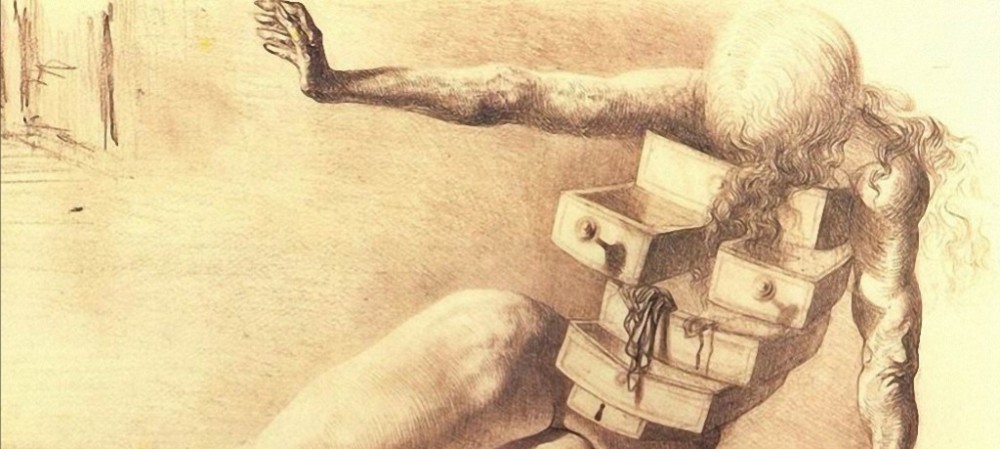PORTRAIT OF PICASSO (1947)
Cuando Dalí tenía seis años, Pablo Picasso (1881-1973) visitó la casa de Pixot en Cadaques. En aquel momento Dalí se hallaba en este pequeño pueblo pesquero y se percató de la visita del artista. En 1926 diecisiete años después visitó a Picasso en su casa de Paris, donde el gran artista alentó a su joven colega español. El trabajo de Dalí a lo largo de la década de 1920 revela la influencia de Picasso y cómo es lógico siempre lo tendría en gran estima.
Después de la Guerra Civil, durante la cual Picasso se mantuvo vehementemente en posiciones antifacista, la relación entre los dos artistas se enfrió. El retrato de Picasso que hizo Dalí revela cómo para la década de los 40 había cambiado en gran medida la opinión que tenía del artista malagueño.
Pintado durante la etapa americana de Dalí y expuesto por vez primera en la galería Bignou de Nueva York del 25 de noviembre de 1947 al 31 de enero de 1948.
Dalí coloca el busto de Picasso sobre un pedestal de estilo clásico, que representa el estatus del artista y su importancia. Sin embargo, Dalí transforma la apariencia real de Picasso con una serie de símbolos que poco tienen de halagadores. El cerebro de Picasso se ha extendido adoptando la forma de un camaleón que engulle sin criterio alguno la inspiración para su obra. El laúd que se encuentra sobre la cuchara es el símbolo del arte picassiano.
Dalí pensaba que Picasso era el responsable en parte de los cambios que había sufrido el arte moderno, soportando así todo el peso que supone esto y simboliza esta idea, colocando una piedra sobre la cabeza de Picasso.
Parece una burla en toda regla, cerebro derretido, pechos flácidos y caídos, el clavel rojo como símbolo de lo vulgar.
Un retrato que traspasa lo daliniano y se acerca al arte picassiano. Bien se podría pensar que todo ese “amor-odio” que sentía proyectado sobre este retrato, hace que la imagen resultante pueda pasar por un autorretrato.
When I was six Dalí, Pablo Picasso (1881-1973) he visited the house in Cadaques Pichot. At that time Dalí was in this small fishing village and realized the visit of the artist. In 1926, seventeen years after Picasso visited at his home in Paris, where the great artist encouraged his young Spanish colleague. Dalí’s work throughout the 1920s reveals the influence of Picasso and how would naturally always in high esteem. After the Civil War, during which Picasso remained vehemently anti-fascist positions, the relationship between the two artists was cooled. Picasso portrait that reveals how Dalí made for the decade of the 40 had changed greatly opinion was by Picasso.Painted during the American period of Dali and exposed for the first time in Bignou gallery in New York November 25, 1947 to January 31, 1948. Dalí Picasso bust placed on a pedestal of classical style, which represents the status of the artist and its importance. However, Dali transformed the actual appearance of Picasso with a series of symbols that have little flattering. Picasso’s brain has spread in the shape of a chameleon without any criteria engulfing the inspiration for his work. The lute is on the spoon is the symbol of Picasso’s art.Dalí thought that Picasso was partly responsible for the changes he had undergone modern art, thus supporting all the weight that this represents and symbolizes this idea, placing a stone on the head of Picasso.It seems a mockery fledged, melted brain, flabby, sagging breasts, red carnation as a symbol of the vulgar.A portrait that transcends the Dali and Picasso approaches the art. While you might think that all this «love-hate» that was projected on this portrait makes the resulting image can undergo a self-por

